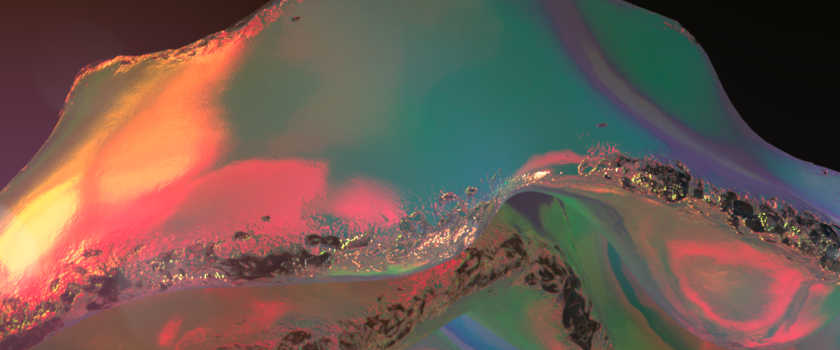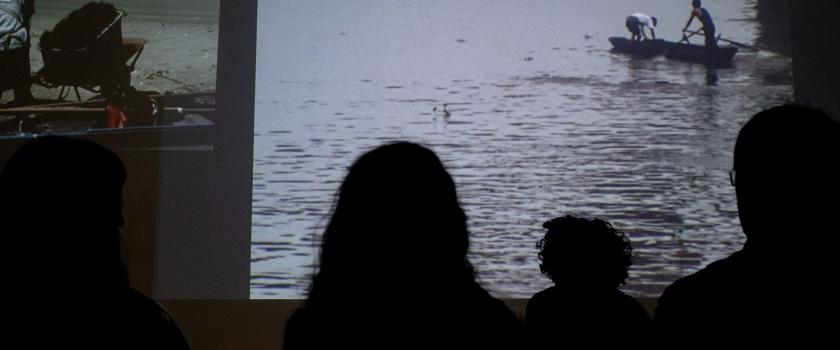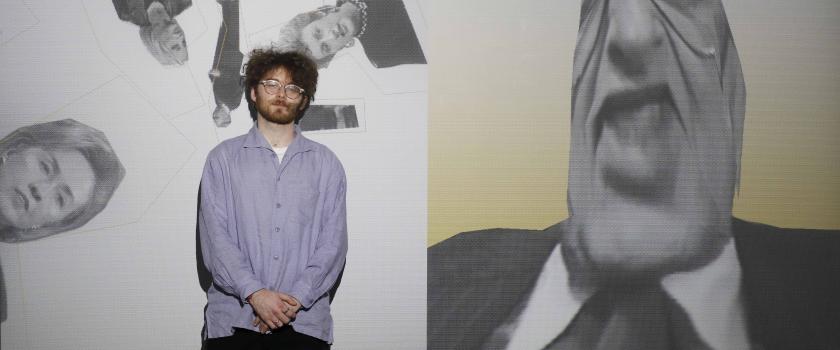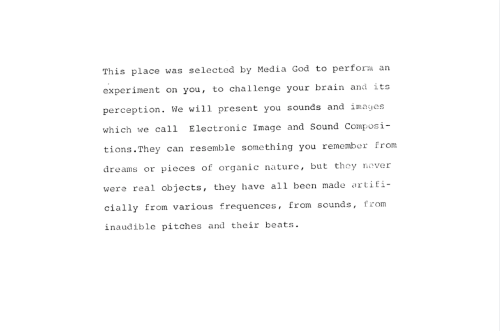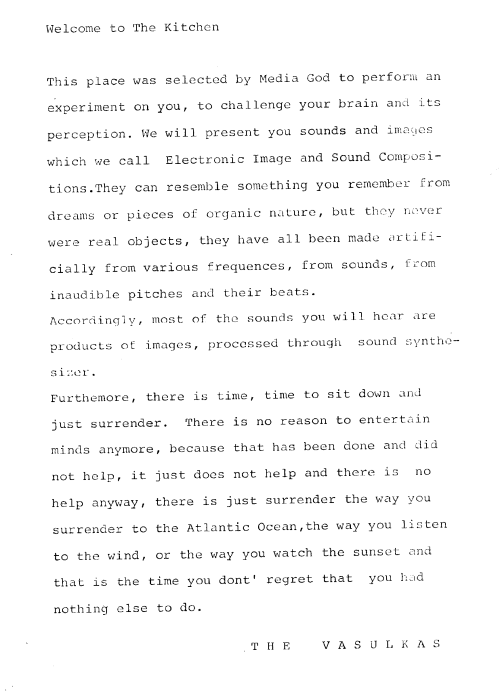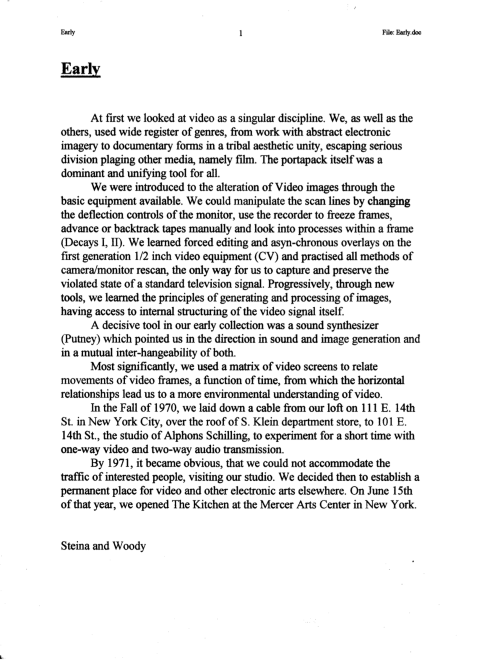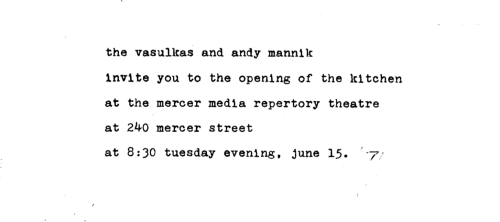Almost 50 years ago, in June 1971, a trio of artists Andy Mannik, Woody and Steina Vasulka sent out an invitation to open a new space in the former Grand Hotel building on Mercer Street. They named the room and program The Electronic Kitchen, later referred to as the Kitchen. It came about during turbulent years, and the Kitchen was given an inspiring local context: on one of the two floors of the massive eight-story Mercer Art Center building, Richard Foreman had a studio with the Ontological-Hysterical Theatre; next door was the famed Oscar Wilde Room, a rock club where bands like the New York Dolls, David Johansen, Johnny Thunders, Sylvain Sylvain, Billy Murcia, and Arthur Kane Jr. performed and rehearsed. The surrounding streets were lined with art lofts, small restaurants, and independent theaters (Off-Off Broadway, as the non-commercial experimental scene is called here). The “Kitchen” could seat up to 200 people and the program ran 7 days a week.
The Vasulka’s reinforced their invitation with a somewhat “new age” manifesto: “This place was selected by Media God to perform an experiment on you, to challenge your brain and its perception. We will present you sounds and images which we call Electronic Image and Sound Compositions. They can resemble something you remember from dreams or pieces of nature, but never were real objects.”
From Miloš Vojtěchovský’s essay The Kitchen as a fermentation boiler of electronic art
“In June 1971, the theatre, which Woody named The Electronic Kitchen after the space’s previous function was founded. It was the former kitchen of the now-closed Broadway Central Hotel, now converted into the Mercer Arts Center, an important center of experimental activity downtown. One of the subtitles was “electronic media theater for video, film, music, and performance,” another was “test lab for live audiences,” which meant that the parameters of the space and audience reactions to what was going on in it were tested. (...)
The Kitchen was one of the first venues dedicated to video and other art, especially electronic music, and was based on the idea of openness to everything new and inspiring. From the beginning, it was an intermedia space in which video was related to other art forms, especially electronic music, and the different media and approaches naturally influenced each other. The founders of the peculiar theatre were well aware that they did not want to present video in isolation, also because they understood video as an activity ‘that was not a priori art’.” From the book by curator and art theorist Lenka Dolanová Steina and Woody Vasulka: Dialogue with Demons (published by NAMU, 2011)
The documents come from the unprocessed archive of Vašulka Kitchen Brno.
